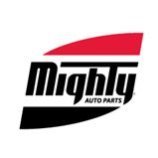-
Welcome to Auto Parts Forum
Whether you are a veteran automotive parts guru or just someone looking for some quick auto parts advice, register today and start a new topic in our forum. Registration is free and you can even sign up with social network platforms such as Facebook, X, and LinkedIn.
Troubleshooting With NAPA: Why Is My Car Heater Blowing Cold Air?
-
Similar Topics
-
By Mighty Auto Parts
The post
link hidden, please login to view appeared first on link hidden, please login to view. Nothing is more frustrating for the vehicle owner than a puddle of oil on their carport fl oor or the stench of oil on a hot engine or exhaust system following a lube service. It is equally frustrating for the lube shop asthey must correct the problem, losing billable labor time. We have seen customers […]
The post
link hidden, please login to view appeared first on link hidden, please login to view.
link hidden, please login to view -
By Counterman
link hidden, please login to view and link hidden, please login to view, have entered a preferred partnership to release asTech Mechanical, a single device capable of accessing the majority of original equipment (OE) tools for shop owners. A recent study from Hanover Research and Babcox Media suggests that over 20% of repairs required an OE diagnostic tool to properly complete the repair job. However, many OE tools require a large upfront investment, costly upkeep, and specialized knowledge, creating barriers for many shop owners. Repairify and NAPA said asTech® Mechanical solves this issue by enabling shops to remotely connect to an OE tool, operated by a certified technician, to perform programming, calibrations, and vehicle health checks on a pay-per-use basis. “As a leader in the aftermarket repair industry, we’re dedicated to improving technician and shop efficiency,” said John Molidor, product category director – tools and equipment; paint, body, and equipment at NAPA. “Our partnership with
link hidden, please login to viewto launch asTech Mechanical will bring much needed resources to shop owners as we look to the future of vehicle technology.” “For almost a decade, we’ve been the global leader in remote OEM solutions for collision repair,” said Craig Edmonds, president of asTech. “We’ve long understood that our same patented technology could also serve the needs of mechanical shops, and a partnership with
link hidden, please login to view helps us scale our solution to introduce the asTech® Mechanical solution suite to the industry.” asTech® Mechanical is now available on compatible Launch and Autel devices.
The post
link hidden, please login to view appeared first on link hidden, please login to view.
link hidden, please login to view -
By Mia
The brake pads seem to make strange noises often.
Have you ever experienced this?
Have you ever found out the reasons?
I only know these reasons:
Causes of noise
① Excessive wear of the brake disc causes noise.
② It is easy to form an oxide layer on the surface of brake disks in a humid environment. The change of the contact surface between the brake disc and the brake pad causes abnormal noise.
③ Due to the corrosion or stagnation of the caliper, the guide pin is not lubricated enough and cannot return efficiently, resulting in incomplete contact between the brake pad and the brake disk.
④ During the running-in period, the brake pads and brake disks are not running in enough. After hundreds of kilometers, the noise will be automatically eliminated.
⑤ On muddy roads, dirt and stones adhere between the brake pads and brake disks. In this case, noise is prone to be caused.
⑥ Brake noise is caused by brake pad formula.
And some understanding of whether the brake pads need to be replaced if abnormal noise occurs.
When should brake pads be replaced?
Brake pads generally need to be replaced after the vehicle has traveled approximately 60,000 kilometers. However, the warranty for KETULLA brake pads ranges from 30,000 to 50,000 kilometers, depending on driving habits and road conditions.
When the thickness of the brake pads approaches or falls below 0.3 centimeters, it’s time to replace them. If you hear friction noises when lightly pressing the brakes, immediate replacement is necessary. When the friction material thickness decreases to 8 millimeters, it’s advisable to inspect and possibly replace the brake pads. When the pad and steel plate thickness decreases to 3 millimeters, immediate replacement is recommended to avoid safety hazards.
The lifespan of brake pads typically falls between 30,000 to 50,000 kilometers, depending on driving habits and conditions. Warning signs for brake pad replacement include decreased braking performance, increased braking distances, and abnormal noises. Regular inspections are necessary to determine when brake pads need replacement.
New brake pads usually have a thickness of approximately 1 centimeter, with a usable limit of 3 millimeters. If brake pads are excessively worn, contaminated with oil, or show signs of abnormal wear or tearing, they should be replaced immediately. It’s essential to regularly check brake pad wear and replace them as needed. Replacement intervals may vary depending on the type of brake pads and driving conditions.
Regularly inspect the thickness of brake pads, and if worn to at least 1/4 inch, it’s time for replacement. The lifespan of brake pads depends on various factors, including driving style, vehicle type, and load conditions. Regular inspections are necessary to determine when replacement is needed.
If you also want to know some information about brake pads, you may go here:
link hidden, please login to view





Recommended Posts
Join the conversation
You can post now and register later. If you have an account, sign in now to post with your account.
Note: Your post will require moderator approval before it will be visible.